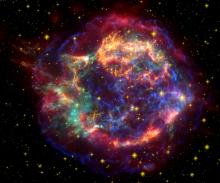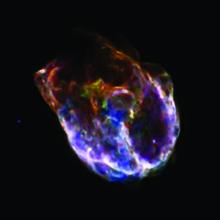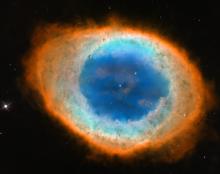Listen to today's episode of StarDate on the web the same day it airs in high-quality streaming audio without any extra ads or announcements. Choose a $8 one-month pass, or listen every day for a year for just $30.
You are here
Manganese
Stars are more than just pretty sights that light up the night sky. They’re also chemical factories. Nuclear reactions in their cores create most of the chemical elements. In fact, their ancestors worked hard to create the elements that now make up our world, and even our bodies.
Some of the most common elements on Earth, such as oxygen, magnesium, and silicon, were made by stars that were much bigger and heavier than the Sun. When the stars exploded, their chemical brew was expelled into the galaxy.
But that’s not the case with all elements. One exception is manganese. Most of it comes not from big stars, but from little ones — stars that are smaller than Earth.
Manganese is slightly lighter than iron. It’s a metal that’s essential for making steel. And the human body needs it, too, although only in trace amounts; foods like oatmeal are the best sources.
Most of the manganese in the universe comes from small, dense stars known as white dwarfs. These stars are common. Indeed, the closest one is less than nine light-years away. It orbits the bright star Sirius, which climbs into view in the southeast in late evening at this time of year.
If a “normal” companion star dumps gas onto the white dwarf, it can become unstable and explode as a supernova. The explosion creates lots of iron, and also lots of manganese — so much that exploding white dwarfs were the source for most of the manganese that’s now on Earth.
Script by Ken Croswell





